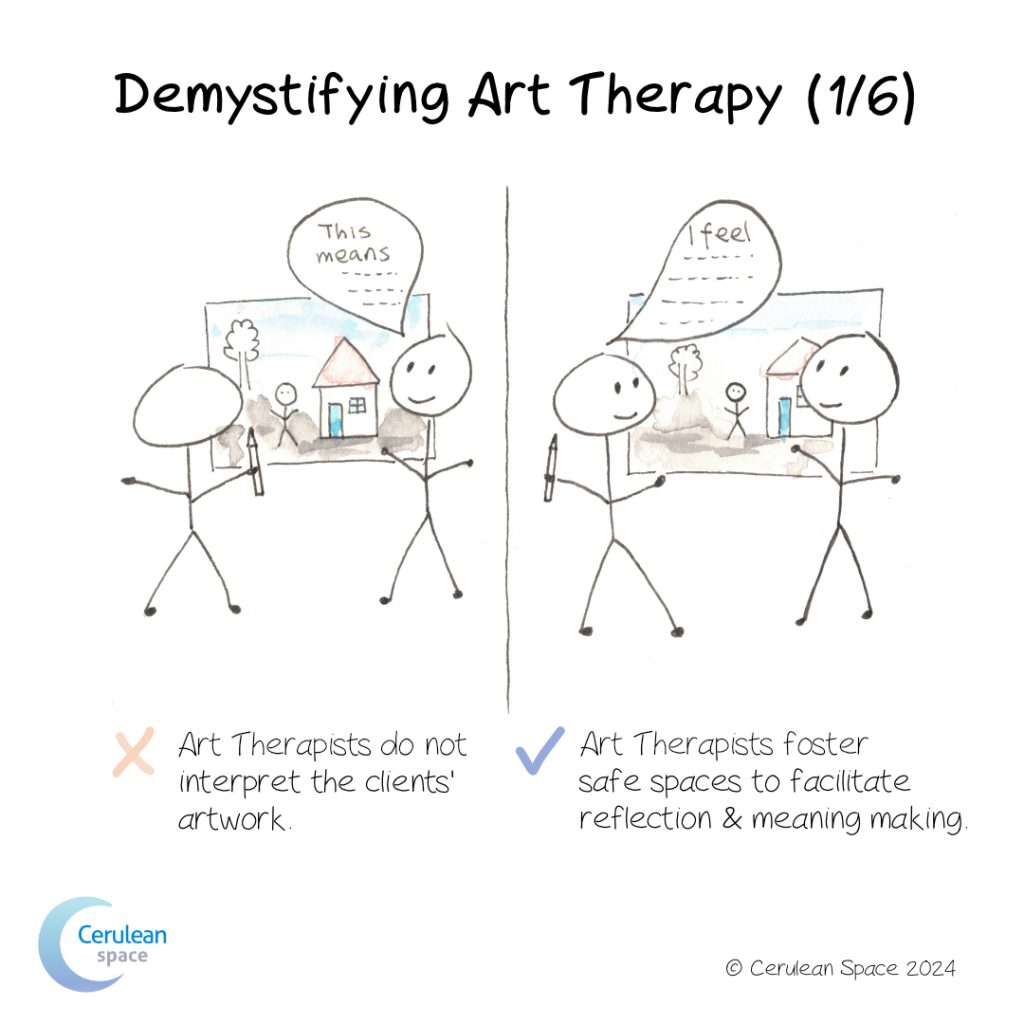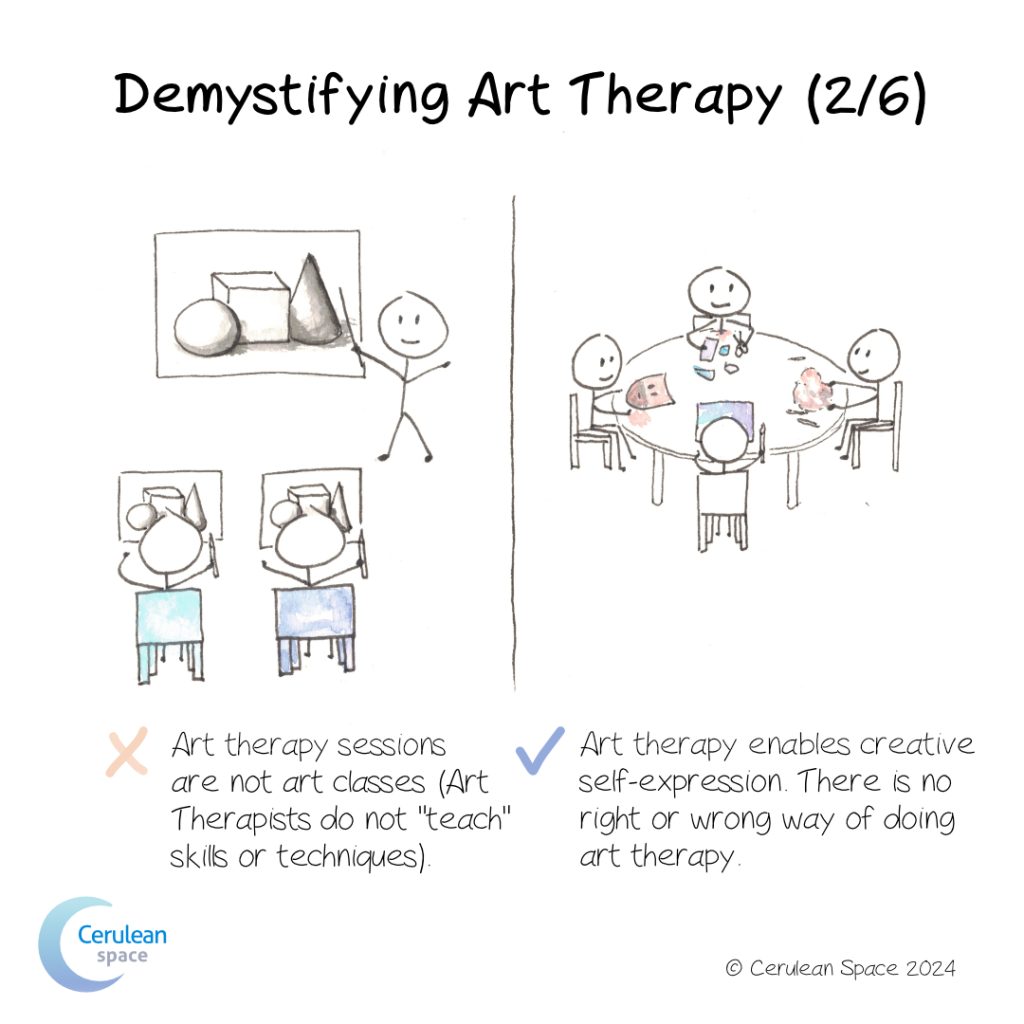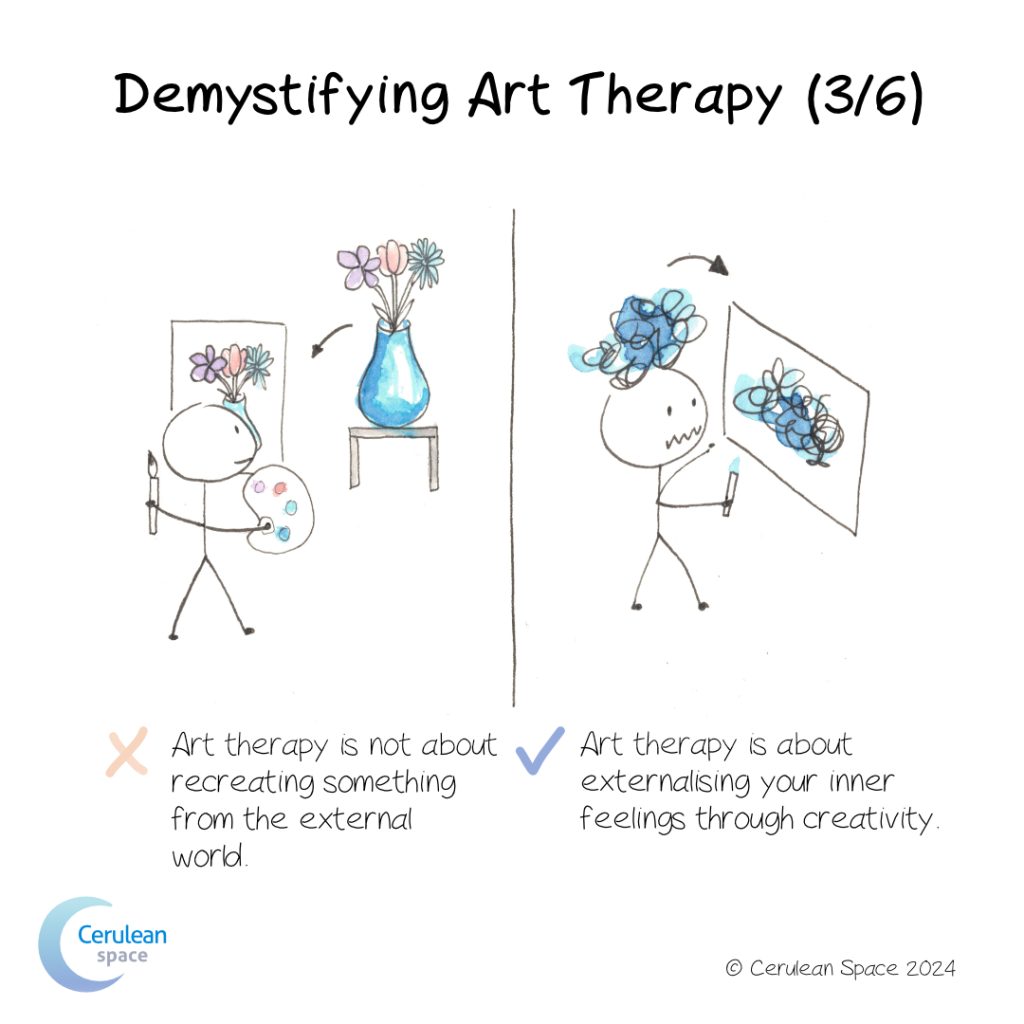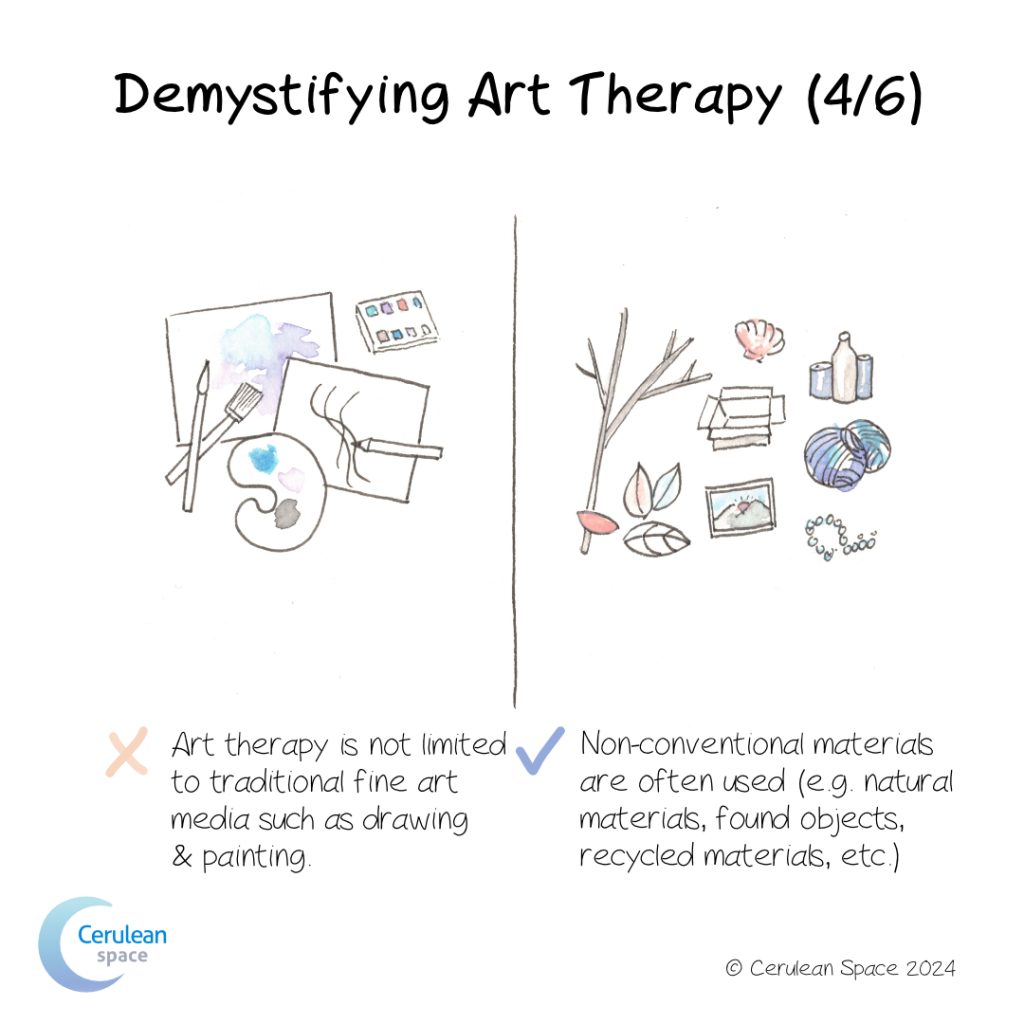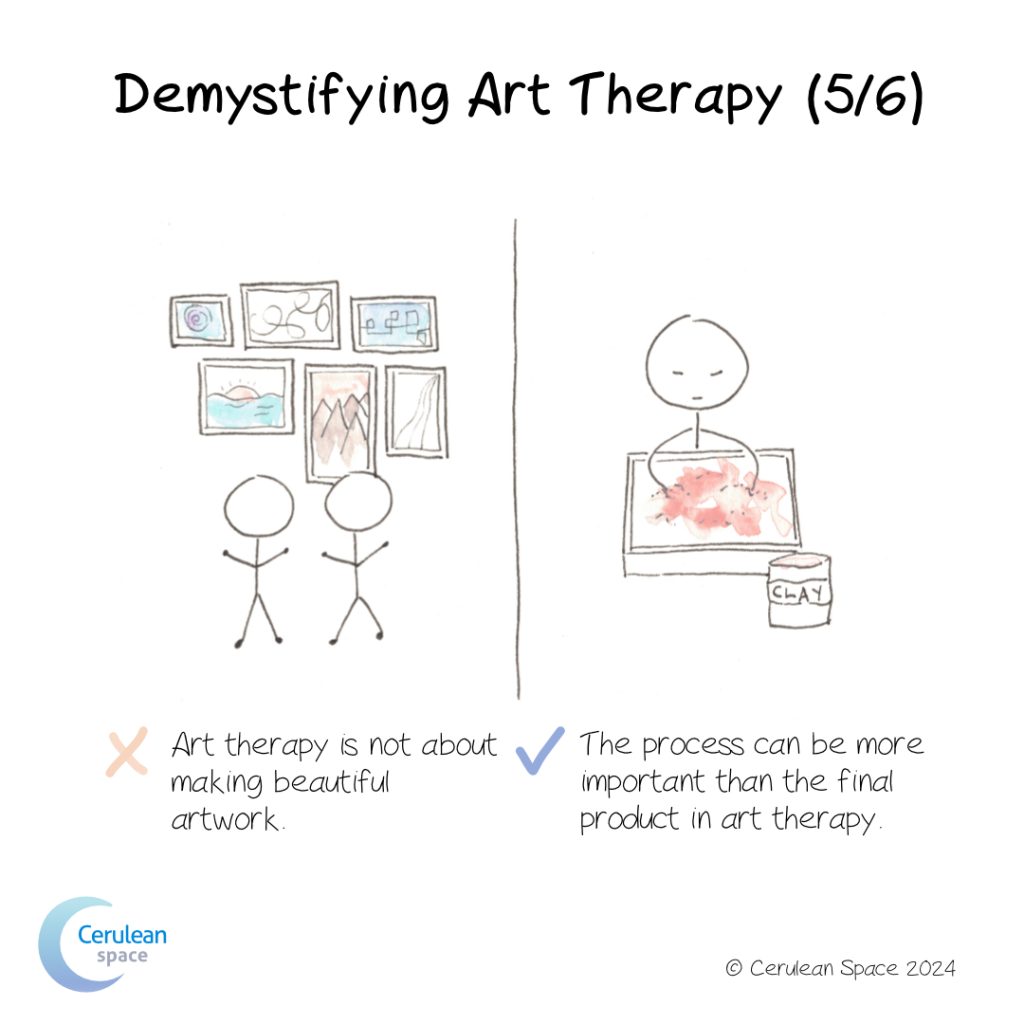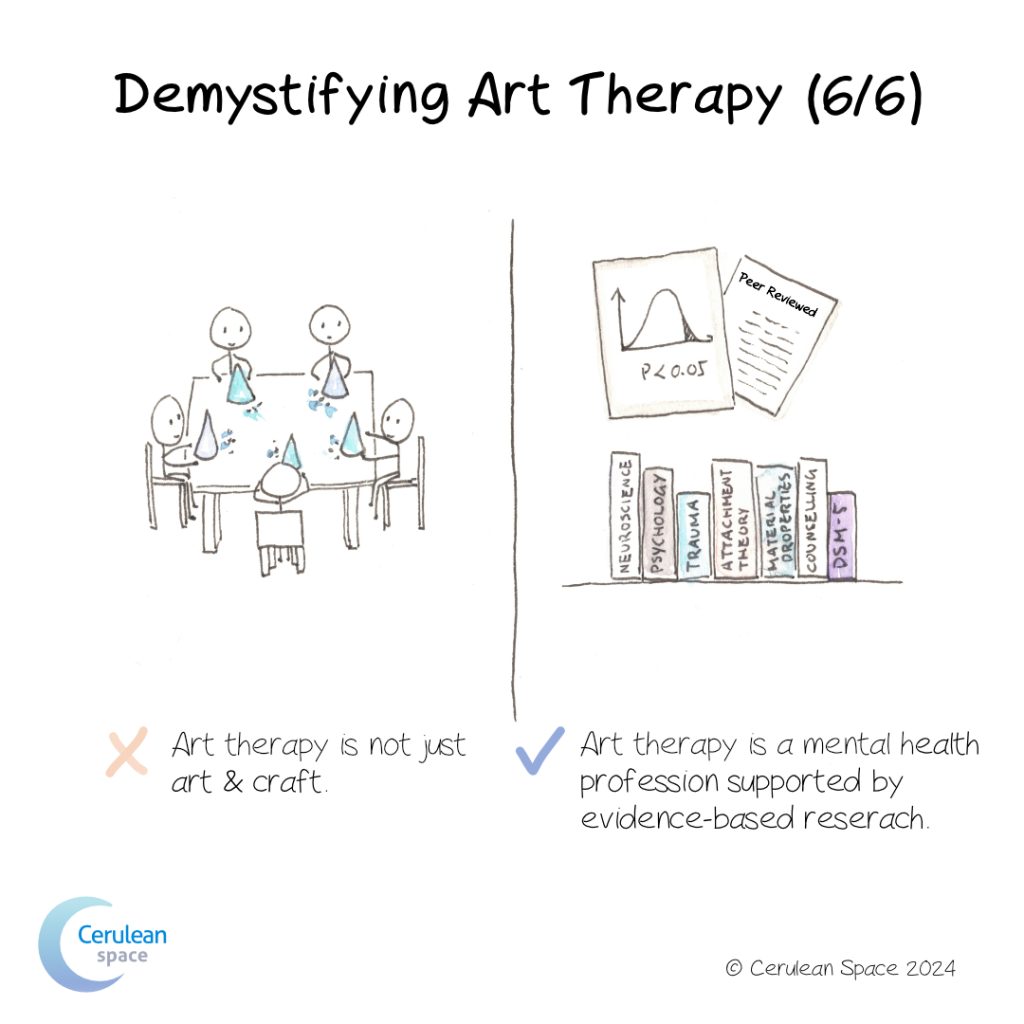
Infographics
The following infographics have been developed to assist you to further your understanding of the practice of art therapy.
Demystifying Art Therapy
When I tell people that I am an Art Therapist, one of the most common responses I get is “so do you interpret people’s drawings?” The answer is no. An art therapist’s role is to foster a safe space for the client to create, reflect and generate insights that may emerge from the artwork, the process, and/or the dialogue with the therapist. In light of the many common myths about art therapy, I have created a this “Demystifying art therapy” series, hoping to share with the world what art therapy is all about.
